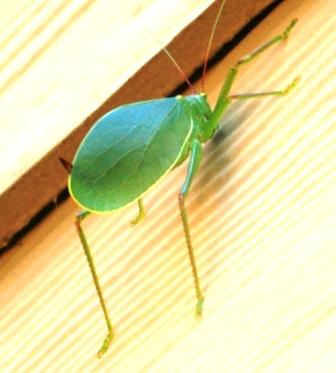by Carl Strang
Indiana Dunes State Park is an older preserve than the National Lakeshore that surrounds it. Last week I spent a day there searching for singing insects. As was true at the National Lakeshore earlier in the month, most of the species I found were familiar, but there were a few added ones. For instance, a female rattler round-wing katydid was climbing the outside wall of the park’s nature center.

Later in the evening I heard a couple males singing nearby.
Also that evening I heard a number of jumping bush crickets. The dunes area had, as expected, gray ground crickets.
The day also brought a mystery. As had been the case at the National Lakeshore forest, confused ground crickets were common in the shaded areas, and there were a few tinkling ground crickets around the dry edges. In addition, however, in the wet-mesic forest south of the State Park’s great marsh, and extending well into the wooded margins of the marsh, a common third species was singing a clear and steady trill. It was similar in pattern, but distinctly lower in pitch and with a different tonal quality, than the Say’s trigs that were abundant in more open areas nearby.

Red oaks, ferns and deep leaf litter were characteristic of the mystery cricket’s song sites.
I remembered that the spotted ground cricket is a forest species I had not yet found, and thought that perhaps this would prove to be the solution. Later, however, when I consulted reference recordings, I was reminded that the spotted ground cricket has a pulsing trill unlike the mystery cricket’s steady song. Reviewing other possibilities, I hit upon the melodious ground cricket. The song was very close to what I heard.
The melodious ground cricket is not as well known as many other ground crickets. Edward S. Thomas and Richard Alexander first described it in 1957, and their work provides much of what has been published about it, at least in the North. They characterized it as a marsh species, but their more detailed site descriptions often, if not usually, place it among woody plants. “The majority of our specimens of melodius were secured by tearing apart a soggy, decayed log, honey-combed with insect burrows, about 20 feet from the marsh proper.” While this supports my tentative identification, at some point I will need to get back there and catch some of these crickets to make a positive determination.


























